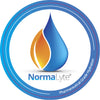Finding a Doctor Who Treats POTS

Finding a Doctor Who Treats POTS

You feel dizzy when you stand up, and sometimes you may even pass out. Your heart starts racing as if you have run a marathon from simply walking across a room. Everyday tasks seem to take so much longer than other people because you’re more tired then you should be even if you’ve gotten enough sleep. Your legs feel like bricks when you’re walking, and why are showers so hard to get through?
Do I Have POTS?
Do you suspect you may have postural orthostatic tachycardia syndrome (or POTS)? All the situations outlined above are symptoms people commonly experience with POTS:
- Dizziness
- Heart racing
- Syncope (losing consciousness)
- Fatigue
- Blood pooling
- Chest pains
- Nausea
- Vomiting
- Headaches
- Shortness of breath
- Brain fog
Getting diagnosed with POTS can be very challenging. According to Dysautonomia International it can take up to six years to achieve a diagnosis! POTS is still something that isn’t widely known or understood among many doctors. It’s usually a cardiologist who does your diagnosis using a tilt table test. You’ve read enough online to know this is how it is diagnosed, but what doctor do you go to see?
How do I find a doctor to treat my POTS?
This is always the biggest question we hear from people who suffer from POTS. Finding a doctor who won’t gaslight you, knows and understands POTS, and is willing to listen to you as you advocate for yourself almost seems like an impossible task.
Dysautonomia International has done the research for you! They have a list of doctors on their website according to area. Click the image below to find a doctor near you.
How is POTS managed at home?
You want to do what you can to get your life back and start feeling more normal. With or without a diagnosis. It’s understandable. There’s a few options for things to try.
Increased water intake. Drink at least 2.2 liters of water each day. POTS patients have a hard time retaining water in their bodies so it’s important to try to drink as much as you can through the day.
Increased sodium intake. The Cleveland Clinic recommends between 3,000mg - 10,000mg of sodium every day for patients with POTS. Those numbers can seem very difficult to achieve, but can be done by adding a medical grade electrolyte replacement. Something like NormaLyte can help you achieve your sodium intake goals in a safe and effective way. In fact, our PURE was made for people with POTS. Always consult with your doctor regarding any diet changes.
Exercise. Okay, we know. This is the thing you hear over and over, but how do you exercise when you feel like you might pass out at any minute? There are modified exercises that can get you moving without making you stand up. Check out our blog going over seated floor exercises you can try at home.
Monitor your heart rate and keep an eye on blood pressure. This can help you have a better idea of how your body is managing POTS on any given day. Some people use smart watches to monitor their heart rate, but even something like a pulse oximeter can be enough to keep you informed.
Get rest. Make sure you’re getting enough sleep each night. Missing a night's sleep can trigger a POTS episode where you find yourself in a flare that can be hard to get out of.








Leave a comment